We have already published several articles about the castle villages of Arcevia: Caudino and Nidastore, Castiglioni, Palazzo, San Pietro and Loretello and finally Piticchio.
But we haven’t written anything about Arcevia itself yet!
A few Sundays ago Isabelle and Erik visited the archaeological museum in Arcevia with a guided tour (that are also available in English). In addition, it is part of the State Museums or Musei Statali with free admission every first Sunday of the month.
The museum is located in the old cloister of the former Saint Francis Monastery (13th century with later adjustments).
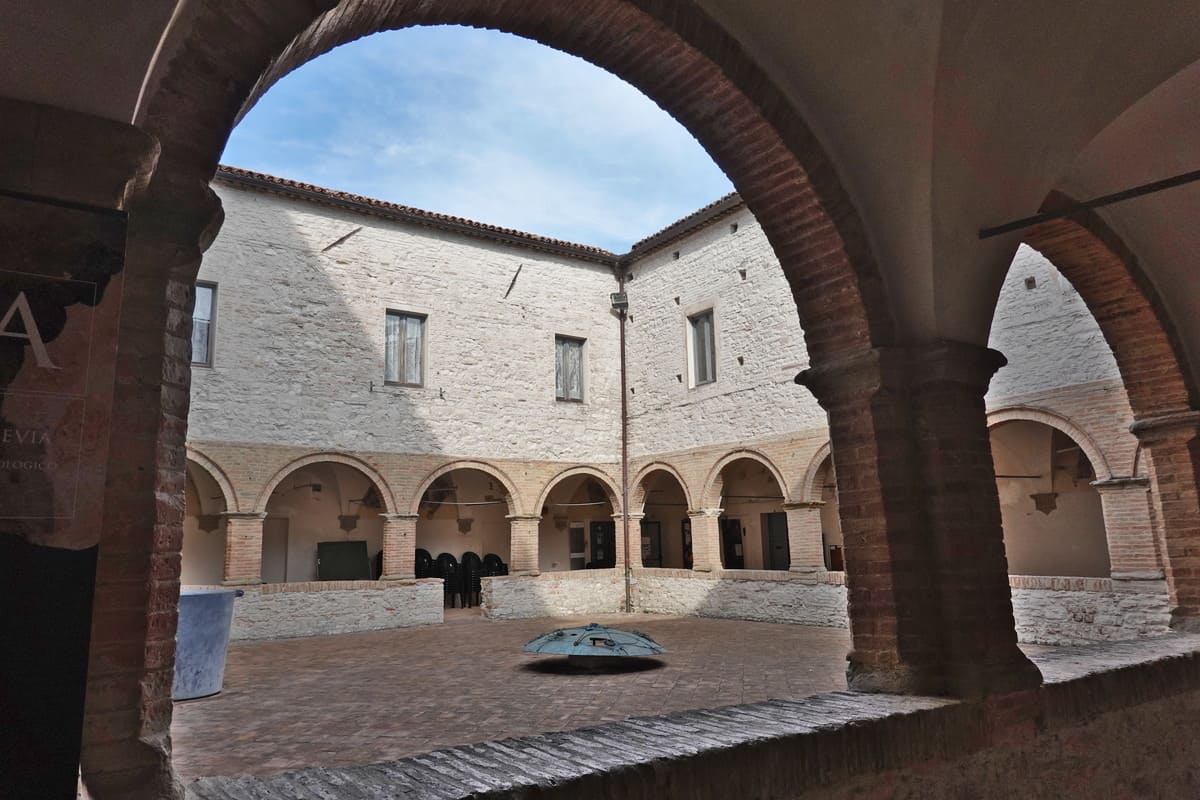
The area around Arcevia has been inhabited for centuries: the first finds of human presence date from 20,000 years ago, from the Old Stone Age, more specifically at Ponte di Pietra. But also remains from the Neolithic (4000 BC) were discovered in the Conelle moat (it was one of our very first blog posts). The Bronze Age also had inhabitants, which can be seen from artifacts excavated at Monte Croce-Guardia. The University of Rome still excavates there every year.
But the most beautiful archaeological treasure dates from the 6th-2nd century, also called the Celtic or Gallic treasure from Montefortino.
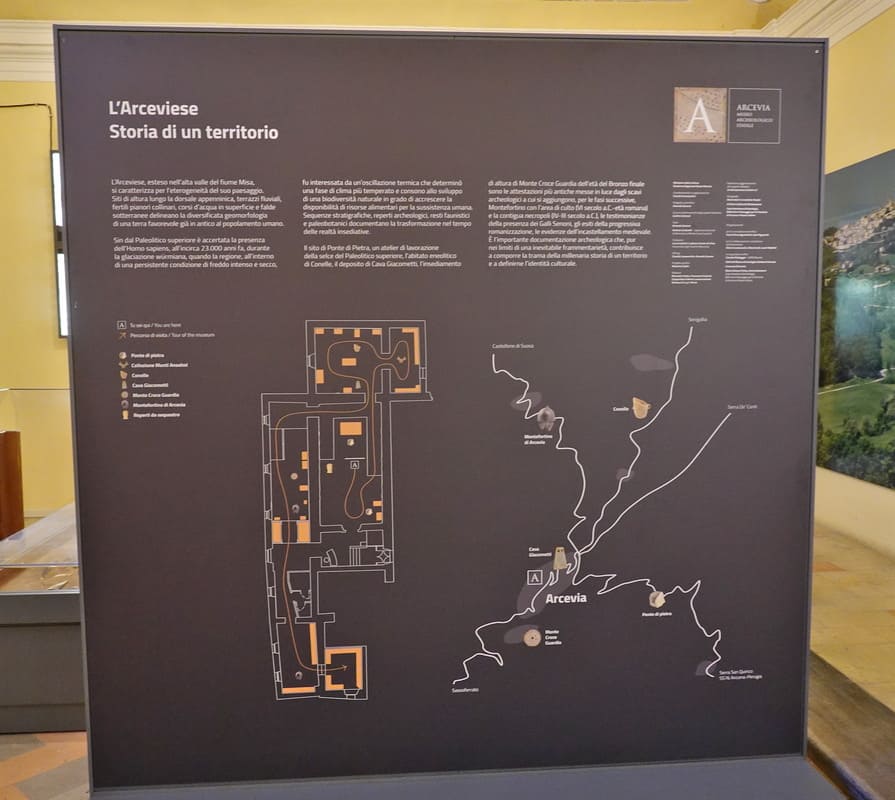
The numerous core stones from which flakes were chipped to eventually form a knife, hand ax or plane are a proof of a very early era. Usually, the guide explained, chips or broken tools are more likely to be found than a fully intact one; as they were used until they were really broken. The intact objects were usually given a place in a grave. The area around Arcevia was characterized by the red color of the stones.
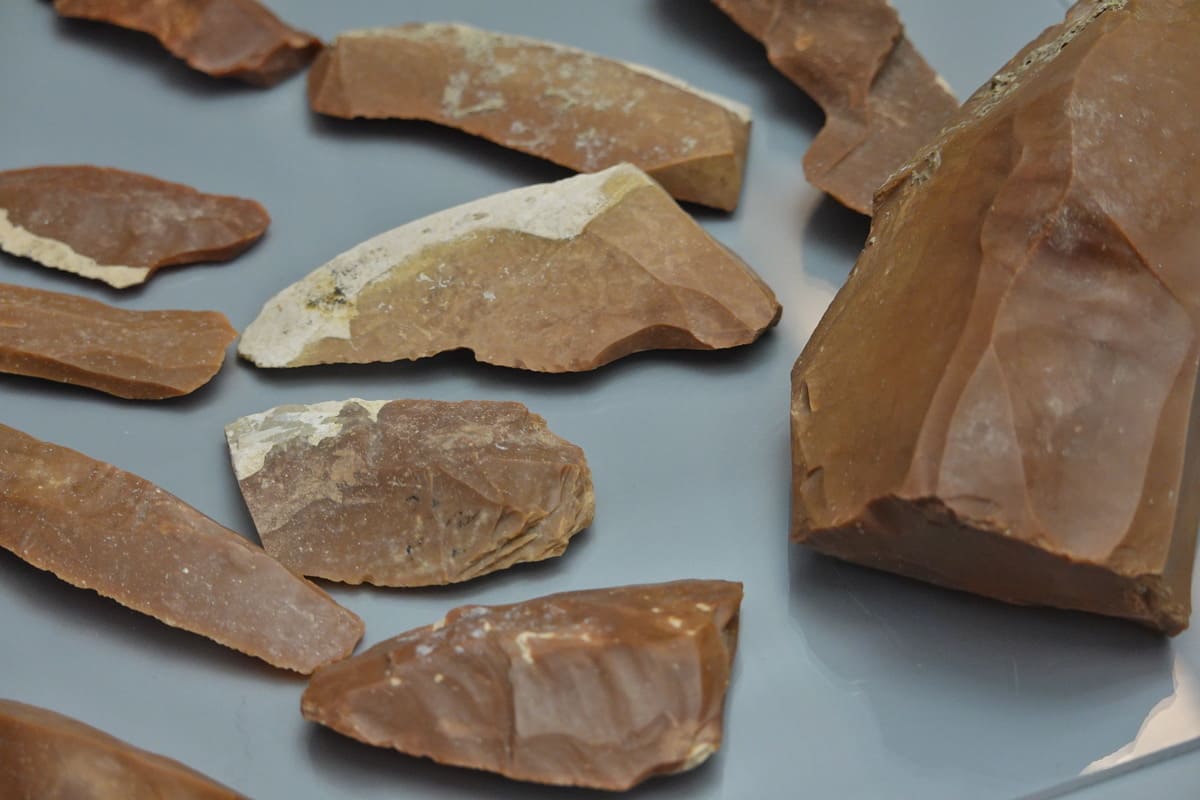
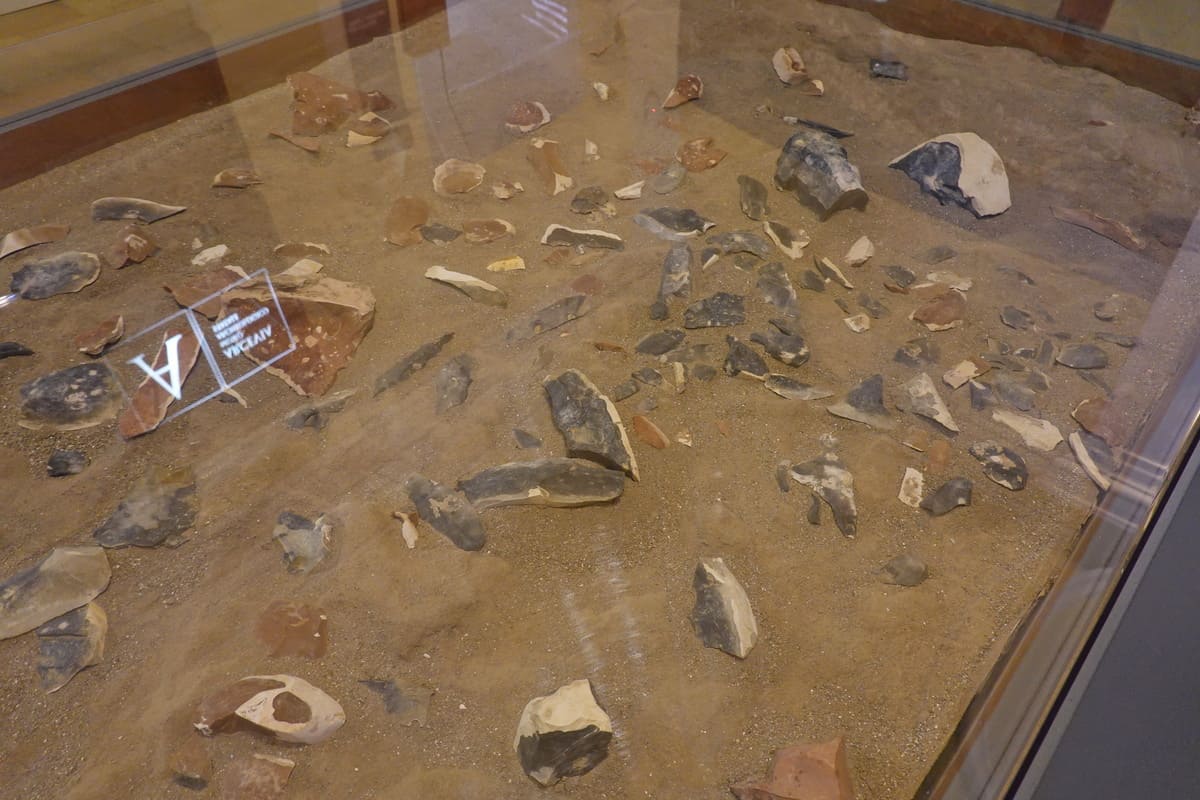
The next room displayed the finds from the Conelle moat, a site that was once abandoned. The gorge was mainly used as a dumping ground, so that in addition to utensils, food remains were also found, such as from a bear or even a dog.
In this era, the Neolithic, the first ceramic pots started to be made, although primitively decorated, but ovens were already used.
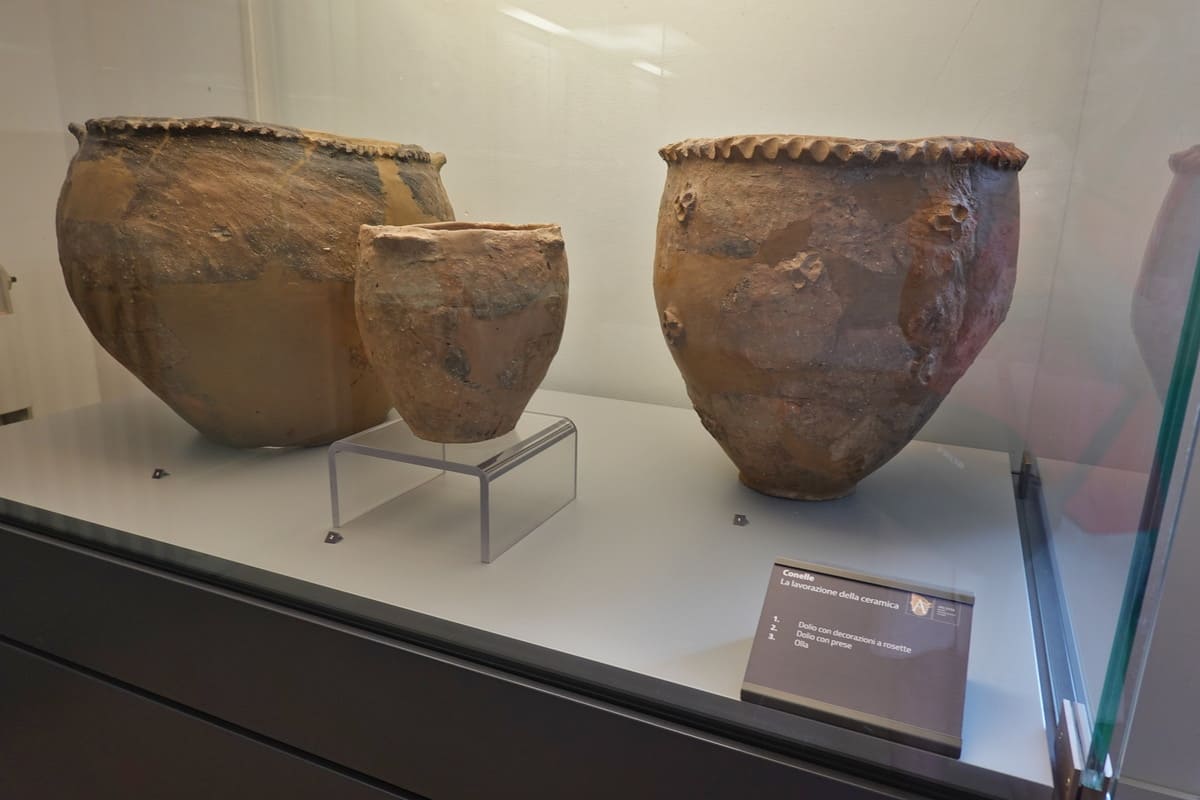
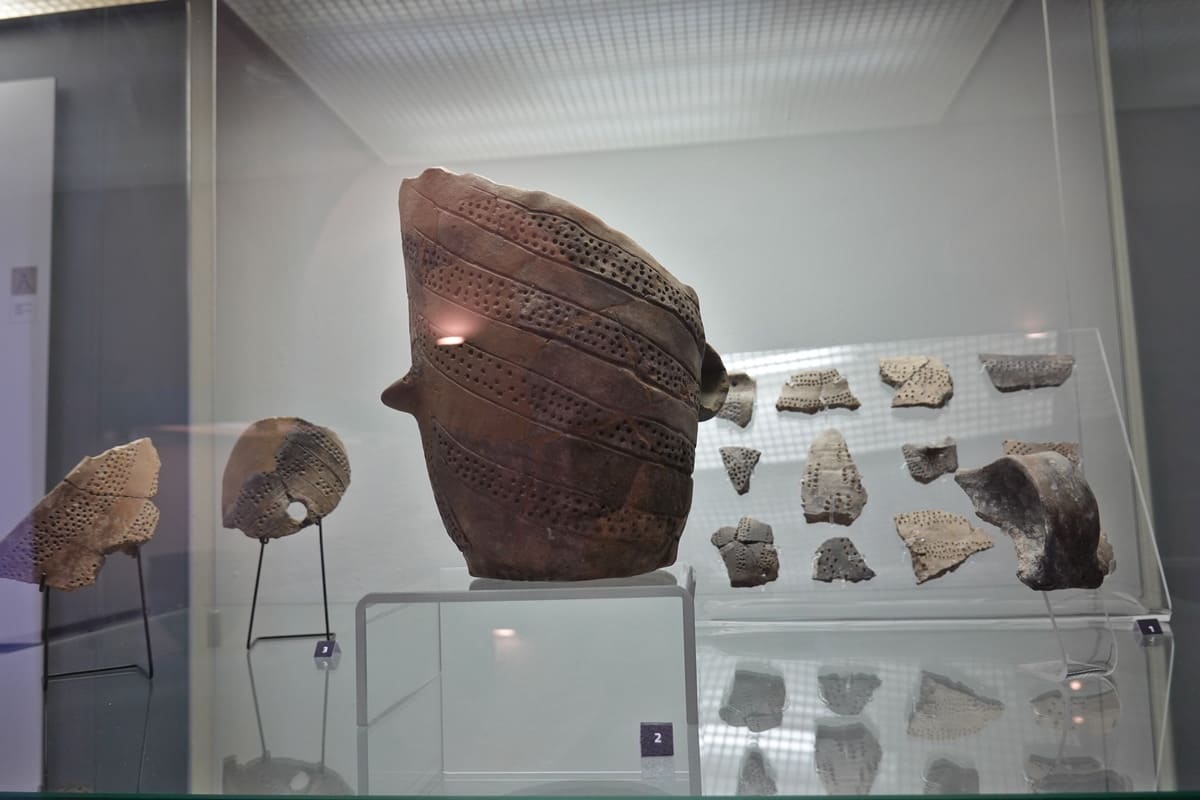
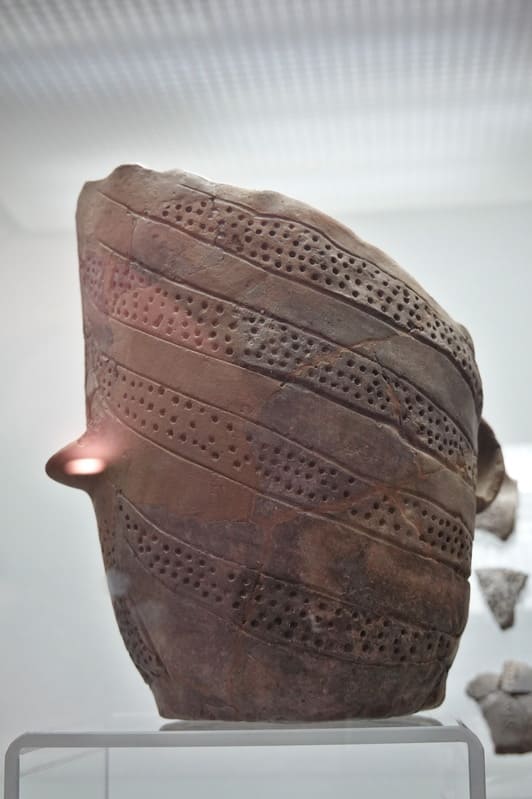

The guide saved the most beautiful room for last: the treasures of the Senonian Gauls or the Celts.
The Piceni, one of the most important peoples that inhabited Le Marche before the Romans arrived, possessed mainly bronze objects, the Gauls, however, golden ones! It is therefore not surprising that over the centuries many objects were secretly dug up and then sold. For example, objects from this Necroplis by Montefortino ended up in the Metropolitan Museum in New York.
At the end of 1800, archaeological excavations were carried out at Montefortino and thus uncovered a necroplis (death city or graveyard) of the Celts or also called Senonic Gauls. In the end, 47 graves were excavated, in which the wooden boxes were sometimes still visible. The male graves possessed all kinds of weapons, although outside the coffin, the female dead were surrounded by jewellery. But also crockery, cutlery, pots and pans accompanied the bodies.
Exhibiting the tombs of 9 tombs, the most beautiful jewel, a golden crown, can be admired in the National Museum of Ancona. But also here enough to appreciate:
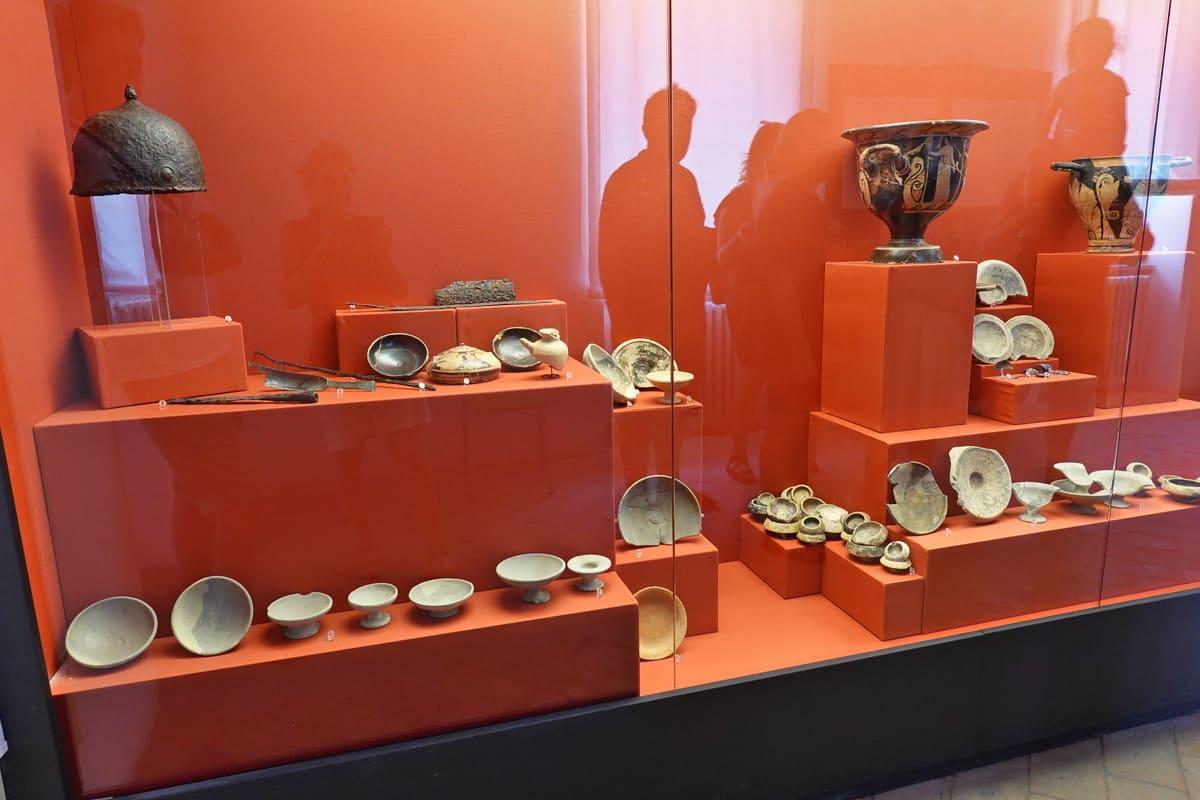
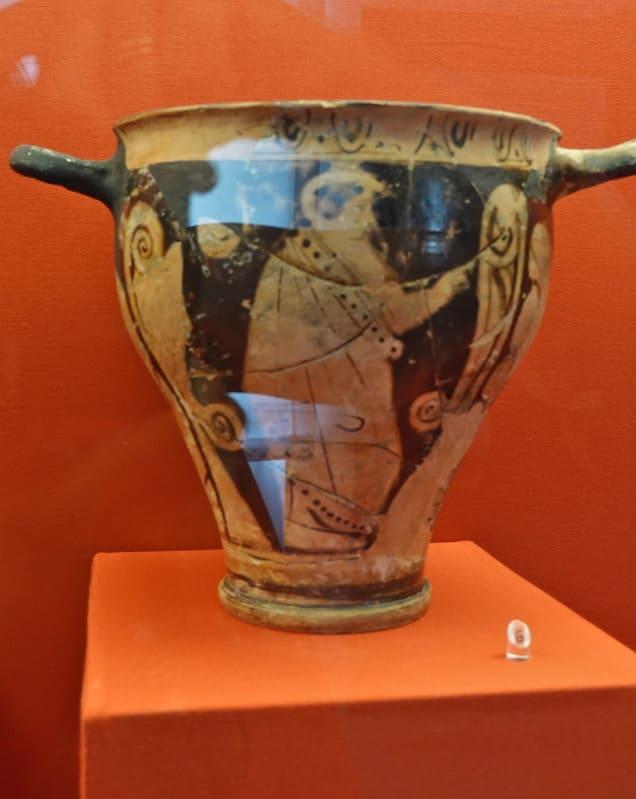




Actually Isabelle photographed more objects, but it was not easy to make sharp images behind showcases….so we would say go and see for yourself what our distant ancestors were capable of.
It is of course the most interesting with a guide!
Consult the facebook page for this. The entrance costs 4€ and opening hours can be found on the website.
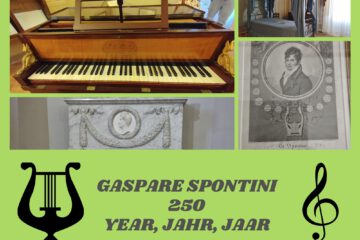
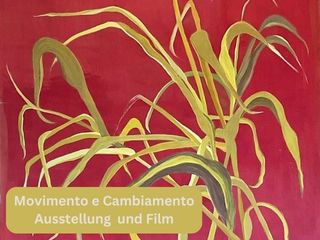
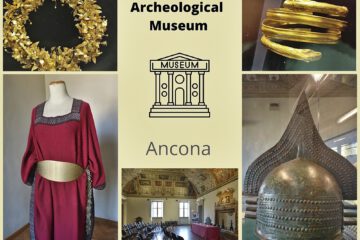
0 Comments